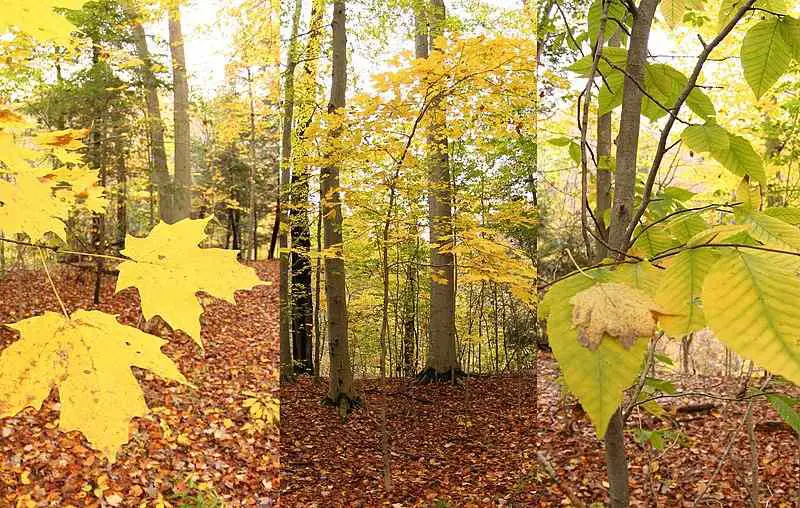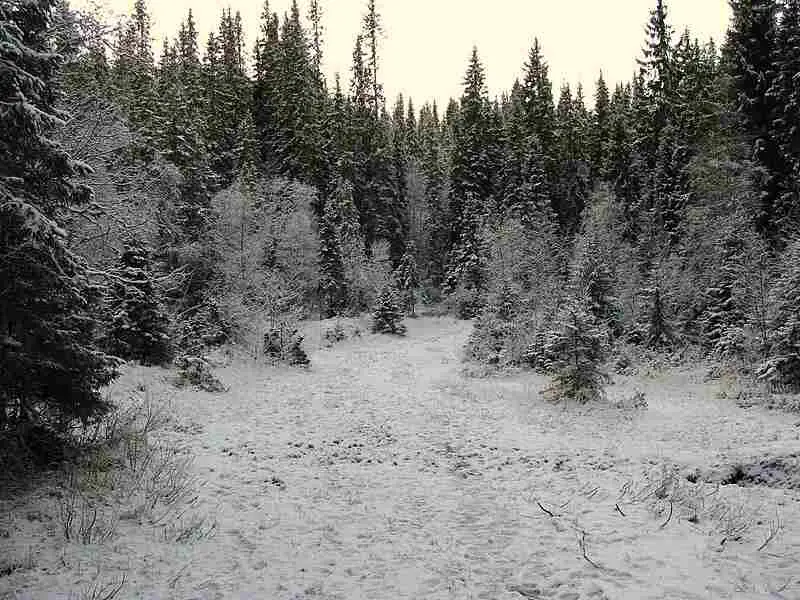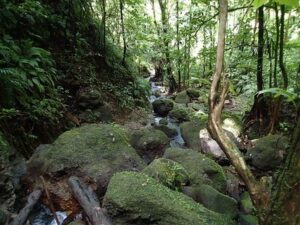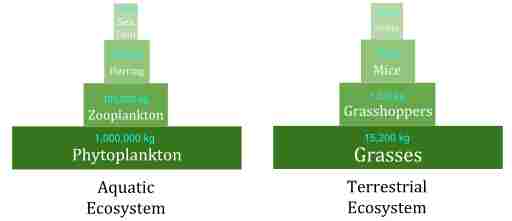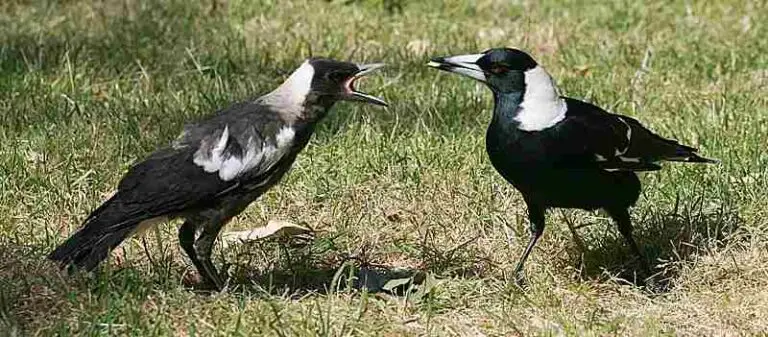3 Types of Forests and Their Ecological Attributes Discussed
Types of forests are; temperate (deciduous, coniferous), tropical (rainforest, seasonal forest), and boreal (northern, middle, southern) forests respectively.
This article discusses the types of forests and their attributes, as follows;
1). Temperate Forest (as one of the Types of Forests)
The temperate forest is a highly-diverse ecosystem with dynamic characteristics, and which could be referred to using other terms like broadleaf and deciduous forests, respectively.
Generally, temperate forests occur in areas having moderate, non-extreme climatic conditions.
Characteristics of temperate forests are;
1. Presence of deciduous trees
2. Moderate climatic condition
3. Fertile soil
4. Significant biodiversity
5. Vegetative canopy structure
The deciduous trees in temperate forests represent the most dominant plant group, and may in some cases (for mixed forests) occur alongside several coniferous trees [5].
Dominance of deciduous tress is the distinguishing characteristic between temperate and boreal forests, given that the latter is dominated by coniferous trees.
Deciduous trees shed their leaves in the winter season as an adaptive measure for energy conservation and survival under the harsh environmental conditions. The leaves are regrown in summer, when solar energy and water are more accessible.
Some common examples of deciduous trees that occur in the temperate forest are; birch, maple, beech and oak.

Climatic conditions of the temperate forest are relatively moderate, with less heat than tropical rainforests and less cold than boreal forests.
There is also annual seasonality of weather in temperate forests, with four distinct seasons including winter, spring, autumn and summer [2]. None of these seasons is typically associated with extreme conditions, rather they range from cold to warmth.
Biodiversity and species richness are fairly high in the temperate forest, especially when compared to resource-deficient ecosystems like deserts and tundras.
Temperate forest plants and animals constitute a diverse group of adapted individuals that interact to form complex food chains and webs in which biomass, energy and nutrients are recycled.
The plants include ferns, herbs, shrubs, and mosses; while animals can be categorized into groups of amphibians, reptiles, insects, birds and mammals respectively.
Temperate forest soil is fertile, with sufficient availability of nutrients [6]. This can be attributed to multiple factors.
The senescence or leaf-shedding characteristic of deciduous trees implies that temperate soils have a good supply of organic matter in the form of leaves, alongside materials from other organic sources.
Because climatic conditions are moderate, the rate of biodegradation is neither too rapid nor too slow, allowing the soil to benefit from an optimally-timed cycle of organic breakdown and nutrient-release.
This minimizes leaching, and allows temperate forest soil to cumulate and retain significant amounts of nutrients that are used to support plant growth.
The plants in a temperate forest have different height-ranges. This results in a distinctive canopy framework that comprises of multiple layers of vegetation.
Layers of vegetation in temperate forests include the topmost emergent layer, understory, and forest floor. Each of these layers has its dominant plant type (trees, shrubs, herbaceous plants...) and its organic population.
The temperate forest canopy plays a huge role in determining the dynamic conditions of the biome.
2). Tropical Forest
The tropical forest is a type of forest that is located in regions close to the equator, and abundant with plant and animal biodiversity.
Characteristics of tropical forests include; dense vegetation, high amounts of rainfall, and warm temperatures [1].
Tropical forests can be classified into; tropical rainforests and seasonal tropical rainforests.
A tropical rainforest is a humid, vegetated terrestrial ecosystem that is characterized by dense vegetation forming a complex canopy structure.
The tropical rainforest earns its name from receiving over 2,000 millimeters of rainfall yearly [3].
As a result, vegetation is abundant, with trees producing broad green leaves that form a shade over the forest floor.

Biodiversity is also abundant in rainforests, with several thousands of species occurring in tropical rainforest zones around the world. These species are supported by the complexity of their environment, which provides multiple micro-habitats and surplus resources.
The seasonal tropical forest, can be differentiated from tropical rainforest by experiencing distinct weather changes at various times of the year.
This type of forest occurs in tropical areas where rainfall is more restricted to a period of the year, while the remaining period is characterized by distinctive dry weather condition. The alternate seasons created by these differences in rainfall are; wet and dry seasons, respectively.
Like in temperate forests, some trees in a seasonal tropical forest may shed (at least some of) their leaves in the dry season, as part of measures for energy and water conservation. This, alongside the generally lower humidity level, makes seasonal tropical forests to have (slightly) less-dense vegetation and lower biodiversity than tropical rainforests.
Defining attributes of tropical forests as a whole include;
1. Equatorial location
2. Relatively-high temperatures
3. High levels of rainfall
4. Minimal climatic seasonality
5. Complex Vegetative Structure
5. Intricate Trophic Relationships
The dense vegetation limits the amount of solar radiation that reaches the forest floor, minimizes water loss to the atmosphere, and establishes micro-climatic conditions.
These micro-climates are behind adaptations of fauna and flora in the tropical rainforest.
Dense vegetation and abundant biodiversity the forest function as an efficient carbon sink, with large-scale carbon sequestration continuously occurring in the soil. The plants also drive a highly-productive oxygen cycle through their photosynthetic activities.
Lastly, tropical forests are instrumental to the climatic conditions, resources, and sustainability of the equatorial region as a whole.
3). Boreal Forest (as one of the Types of Forests)
The boreal forest, alternatively referred to as the taiga; is an extensive terrestrial biome occurring in parts of Asia, Europe, and North America.
Characteristics of the boreal forest include;
1. Climatic seasonality
2. Extreme, prolonged cold winters
3. Cool, relatively-short summers
4. Dense vegetative structure
5. Dominance of coniferous trees
6. Acidic, infertile soil [4]
The boreal forest is also the largest terrestrial ecosystem on Earth, as it stretches extensively across multiple continental boundaries. It plays a key role in carbon cycles and global climatic conditioning.
Types of boreal forest are;
1. High (or northern) boreal forest
2. Middle boreal forest
3. Low (or southern) boreal forest
The extremity of environmental conditions decreases from harsh to moderate, on moving from high to low boreal forest types; with the low boreal forest transitioning gradually into mild-climate temperate forest as we move further southward.
Based on geographic location, boreal forest may also be described as Scandinavian, Eurasian, or North American.
Scandinavian boreal forest may occur in mountainous or lowland areas of Northern European countries like Sweden, Denmark and Norway. The lowland and highland zones have differences in climatic, hydrological and biotic conditions.
The Eurasian boreal forest covers parts of Asia and Europe.
It can be considered to encompass Scandinavian regions, alongside Siberia, and is the most extensive (continuous) forest zone in the world, having many reserved areas and distinctive biodiversity.

North American boreal forest occurs in parts of Alaska and Canada, covering the Pacific and Atlantic coasts. Some dominant trees in this biome are; balsam fir, birch, black spruce, and aspen.
The boreal forest is most homogeneous among forest types, because it does not exhibit significant distinction across its geographic extent. It is therefore classified based on region of occurrence and minor climatic variations, as discussed in this article.
Conclusion
Types of forests are;
1. Temperate Forest
2. Tropical Forest
3. Boreal Forest
References
1). Dounias, E. (2018). "Rainforest, Tropical." Available at: https://doi.org/10.1002/9781118924396.wbiea1682. (Accessed 7 June 2023).
2). Jiao, Y.; Yang, J.; Guangshuai, L.; Shen, L.; Liu, T.; Yu, L.; Zhang, S.; Zhang, H. (2021). "Biophysical Effects of Temperate Forests in Regulating Regional Temperature and Precipitation Pattern across Northeast China." Remote Sensing 13(23):4767. Available at: https://doi.org/10.3390/rs13234767. (Accessed 7 June 2023).
3). Kastolani, W. (2018). "How to Conservate in Situ and Ex Situ Community Based Biodiversity Park in Sumedang Regency of West Java Province?" IOP Conference Series Earth and Environmental Science 145(1):012091. Available at: https://doi.org/10.1088/1755-1315/145/1/012091. (Accessed 7 June 2023).
4). Kyaschenko, J.; Ovaskainen, O.; Ekblad, A.; Hagenbo, A.; Karltun, E.; Clemmensen, K. E.; Lindahl, B. D. (2019). "Soil fertility in boreal forest relates to root-driven nitrogen retention and carbon sequestration in the mor layer." New Phytol. 2019 Feb;221(3):1492-1502. Available at: https://doi.org/10.1111/nph.15454. (Accessed 7 June 2023).
5). Nakashizuka, T.; Iida, S. (1995). "Composition, dynamics and disturbance regime of temperate deciduous forests in Monsoon Asia." Vegetatio 121, 23–30 (1995). Available at: https://doi.org/10.1007/BF00044669. (Accessed 7 June 2023).
6). Šilingas, M.; Suchockas, V.; Varnagirytė-Kabašinskienė, I. (2022). "Evaluation of Undergrowth under the Canopy of Deciduous Forests on Very Fertile Soils in the Lithuanian Hemiboreal Forest." Forests 2022, 13, 2172. Available at: https://doi.org/10.3390/f13122172. (Accessed 7 June 2023).
